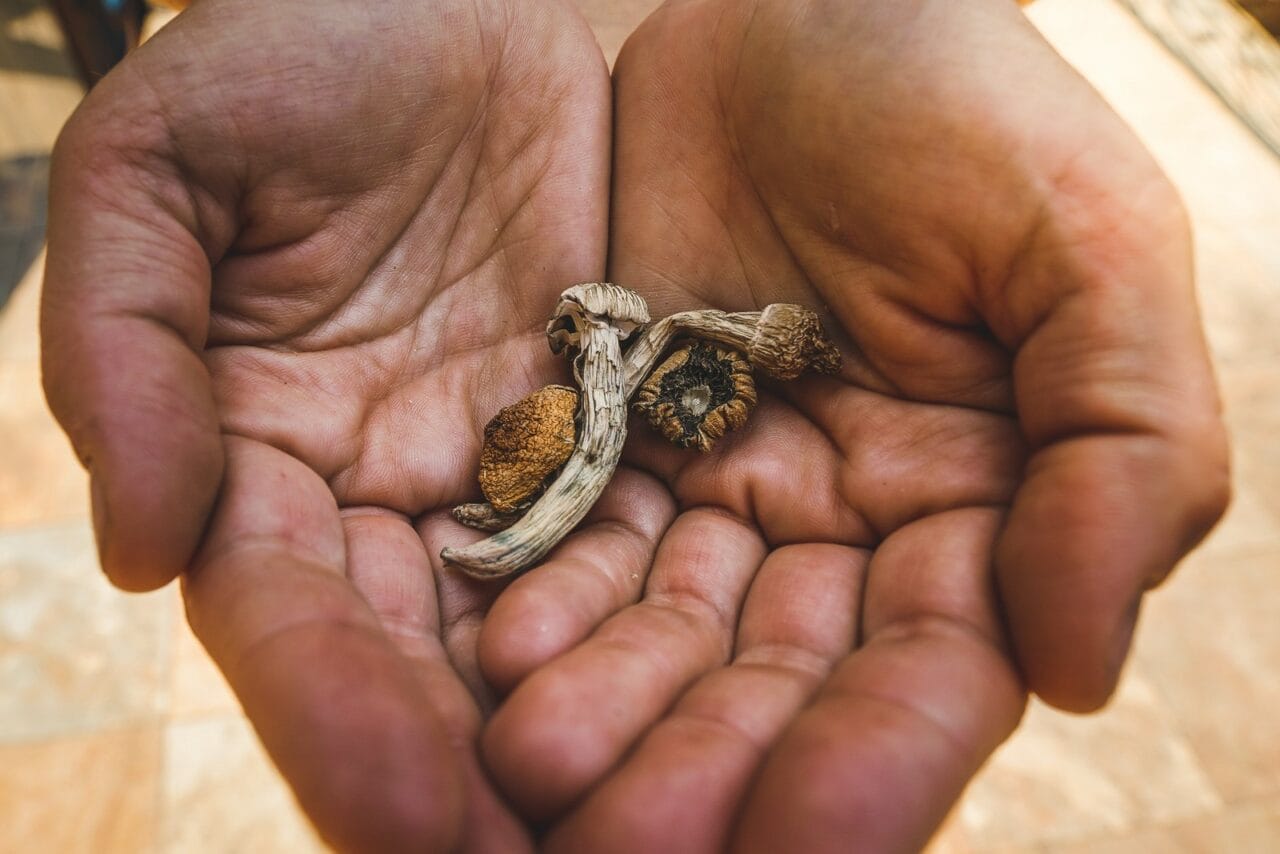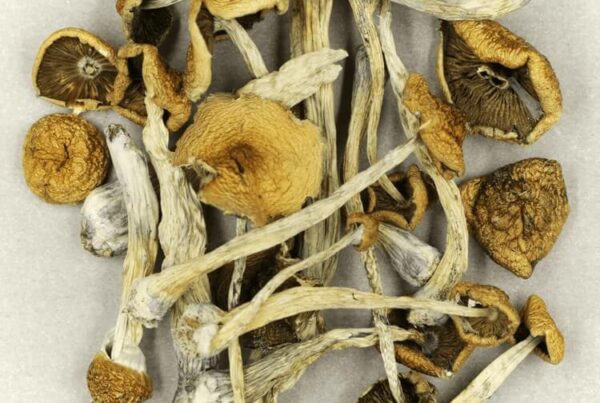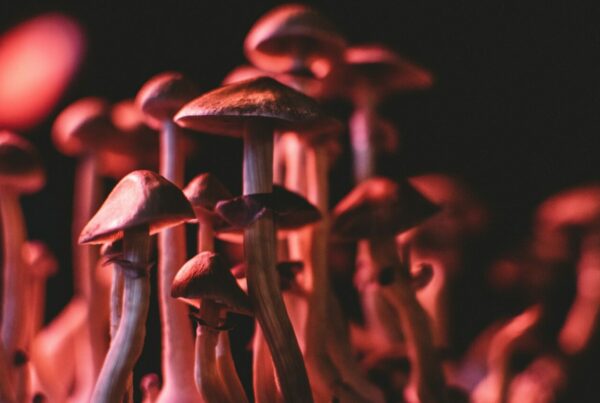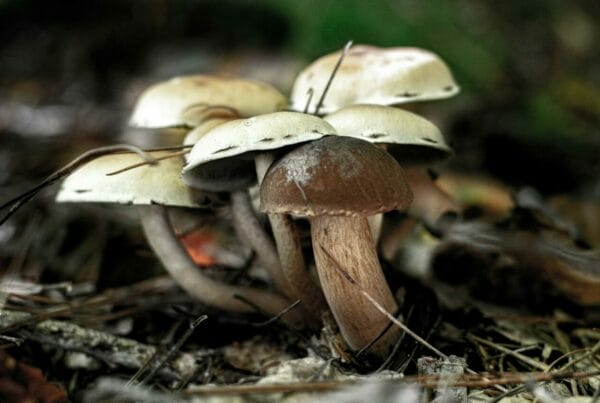Dried mushrooms are among the top-selling psychedelics in the market. You’ve probably heard about them and considered trying them, but you’re unsure if they’re the right choice for you.
It’s not unusual for novices to question which psychedelic to begin with. We’re here to clarify how dried mushrooms stand apart from other substances and why they might be an excellent selection for your initial psychedelic experience.
[toc]Key Points:
- The active ingredient in Psilocybe, it’s the most studied psychedelic for mental health due to its safety, limited abuse potential, and transient effects.
- The most common form is dried Psilocybe, which retains potency and extends shelf life.
- Psilocybin activates the serotonin 5-HT2A receptor, leading to enhanced perception, vivid imagery, complex hallucinations, and time distortions.
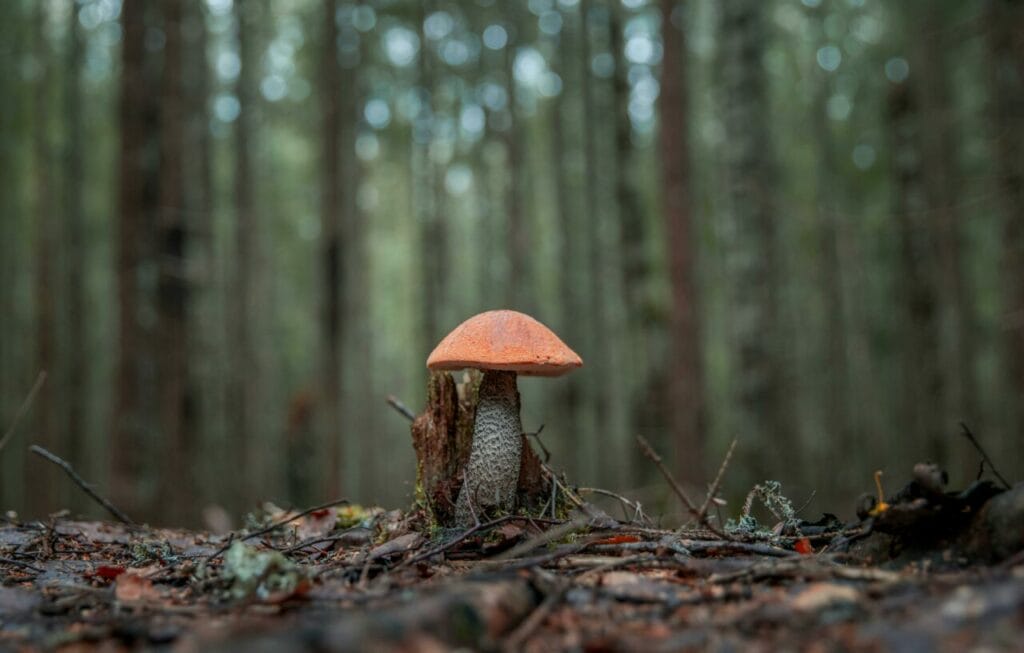
Psilocybin Mushrooms: An Exploration into the Psychedelic Fungi World
A psilocybin mushroom contains the psychoactive substances, psilocybin and psilocin, which induce the hallucinogenic effects experienced by users. The most recognized species—Psilocybe cubensis—features a light brown cap, dark spots, and a distinctive shape. Several other species within the Psilocybe genus also produce these compounds.
Some toxic mushrooms that bear harmful toxins resemble Psilocybe’s look, which is why we strongly discourage mushroom picking.
In the past, many mushrooms played a significant role in Central American spiritual rites. Presently, scientists are studying their potential in addressing mental health issues, including substance abuse disorders.
Processing and Preservation: The Dried Variant
The most accessible form of Psilocybe is the dried variant. Dehydration is essential for preserving potency and improving shelf life. Fresh mushrooms are usually dried using a food dehydrator or placed on a wire rack in a cool, dry area.
This process is crucial for removing excess
Magic mushrooms, once dried, can be preserved for future use. This prevents them from absorbing moisture, which could result in mould growth and the degradation of their active compounds.
Follow this step-by-step guide on how to properly dry and store your magic mushrooms:
- Dry the mushrooms thoroughly using a suitable food dehydrator or wire rack.
- Ensure that you store them in airtight containers to preserve their potency and guard against excess moisture.
- Keep them in a dry, cool place to maintain their psychoactive properties.
- Avoid exposing them to direct sunlight as it can cause them to degrade.
- Regularly look for signs of spoilage like mould or dark spots.
Comparison of Psilocybe Cubensis with Other Psychedelics
Besides dried mushroom products, there are a variety of psychedelic products available online. These products have different effects on the body and can be consumed in various ways. Some of them are categorized as traditional hallucinogens, akin to psilocybin.
| Substance | Origin | Physical Effects | Research Indications | Duration of Effects |
| Psilocybin | Found naturally in over 200 mushroom species | Heightened perception, hallucinations, altered sense of time | Potentially beneficial for depression, anxiety, PTSD, OCD, cluster headaches, and Alzheimer’s disease | 4-6 hours |
| DMT | Naturally occurs in plants such as Psychotria viridis | Intense spiritual experiences, visions, auditory hallucinations | Potential benefits for depression and addiction | 15-30 minutes |
| LSD | Synthetic, first produced by Albert Hofmann in 1938 | Enhanced emotions, altered perception, auditory and visual hallucinations | Potentially useful for depression, anxiety, addiction, cluster headaches, Alzheimer’s disease, Tourette’s syndrome, and ADHD | 8-12 hours |
| MDMA | Synthetic, first synthesized by Anton Köllisch in 1912 | Increased release of serotonin, dopamine, norepinephrine, and possibly oxytocin | Potentially helpful for PTSD, autism spectrum disorder, obesity, narcolepsy, and ADHD | 3-6 hours |
| Ketamine | Synthetic, first synthesized by Calvin L. Stevens in 1962 | Anesthetic, induces psychedelic effects at high subanesthetic doses | May help with depression, bipolar disorder, anxiety, suicidal ideation, addiction, autism spectrum disorder, chronic pain, arthritis, and fibromyalgia | 1-3 hours |
How Does Your Body Respond?
The operational mechanisms of each substance are purely theoretical, based on observed outcomes. These theories shed some light on how these substances might create their effects, but they do not provide a concrete understanding of the underlying processes involved.
- Psilocybin: This easily stimulates the serotonin 5-HT2A receptor, leading to heightened perception, vivid images, complex hallucinations, and time distortions. It also induces changes in thalamic gating and increases prefrontal cortex activity.
- DMT: Its effects on serotonin receptors are just a portion of its overall impact, the full range of which remains to be fully understood. Although the serotonin receptor is vital, it doesn’t entirely account for all DMT effects.
- LSD: It functions in the serotonergic system in the Dorsal Raphe, binding as a partial agonist to the 5-HT2A receptor and as a full agonist to the 5-HT1A receptor.
- MDMA: It triggers an immediate feeling of joy by promoting the release of dopamine and serotonin.
- Ketamine: Its exact mode of action remains ambiguous. Its antidepressant effect might stem from blocking NMDA receptors on neurons, but selective inhibition of NMDA receptors on GABAergic interneurons and suppression of AMPA receptors could also contribute.
What Impact Do Psychedelic Mushrooms Have?
The mental and physical reactions may vary significantly based on dosage, environment, and the mental state of the user. Common experiences associated with psychedelic mushrooms usage include:
- Visual and Auditory Hallucinations: Users may see patterns, colors, and shapes that are not present in reality.
- Distorted Sense of Time: Time may appear to either slow down or speed up.
- Altered Perception: Sensory experiences may be intensified or distorted.
- Emotional Fluctuations: Users may experience a wide range of emotions, from happiness to anxiety.
- Spiritual Revelations: Users may have experiences that are spiritual or mystical in nature.
- Physical Effects: These include a rise in heart rate and blood pressure, and potential feelings of nausea.
Shrooms, when consumed conscientiously, are considered safe. However, lack of adequate preparation can lead to unpleasant experiences for some users. While more seasoned users may find higher doses beneficial, beginners who consume large quantities might face a “bad trip.”
To have a manageable experience with this substance, choose a calm, quiet environment and have a sober “trip guide” to assist you.
A Preferred Substitute to Other Substances
Medical practitioners often prefer dried shrooms owing to their longer shelf life and easy dosage. The shorter duration and more manageable intensity make it an appropriate option for those new to psychedelic therapy. Compared to other synthetic hallucinogens, it’s more natural, with the only exception being DMT.
Distinguishing the benefits of different compounds can be challenging as many clinical trials produce similar outcomes, particularly between LSD and psilocybin. The latter is the most extensively researched psychedelic for mental health issues, mainly because of its proven safety record, low abuse potential, and short-lived perceptual trips.
Health Benefits
- This natural compound may help to ease “cognitive rigidity,” curb negative thoughts, and promote self-compassion.
- A 2022 study revealed that a single 25 mg dose reduced depression scores in individuals with treatment-resistant depression. A 2023 study further reported significant and long-term reductions in depressive symptoms with the combined application of regulated substances and psychotherapy.
- A 2022 clinical trial found that psilocybin-assisted psychotherapy significantly cut down the number of heavy drinking days over an eight-month period compared to a placebo.
- A 2017 study published in the American Journal of Drug and Alcohol Abuse showed that two to three doses, along with cognitive behavioural therapy (CBT), helped 10 out of 15 participants to quit smoking for a year.
- In a 2022 pilot study featured in Biological Psychiatry, four out of five anorexic patients reported an improvement in their eating disorder symptoms after a single dose of shroom with psychotherapy. Additionally, two of them also noticed a reduction in anxiety.
- Preparation Phase: This phase includes one or more sessions, each ranging from 1-6 hours, with a facilitator. These sessions aim to address your concerns, define your goals, and set clear expectations. Their main objective is to build trust and create a safe environment.
- Dosing Phase: This phase lasts for 5-8 hours. During this period, you will be lying down with an eye mask on, and listening to a predetermined playlist. A therapist will be with you throughout the experience.
- Integration Phase: This phase involves post-session meetings to help you understand and interpret your experience. These sessions, conducted over a few meetings, each last for a number of hours.
Are shroom products more cost-effective than other substances?
When compared to LSD products, dried mushrooms are considerably cheaper. For example, you can get 3.5 grams for around $20. Conversely, the cost of LSD in gel tabs varies depending on the dosage. For instance, six tabs with a strength of 100 micrograms each might cost you about $90.

